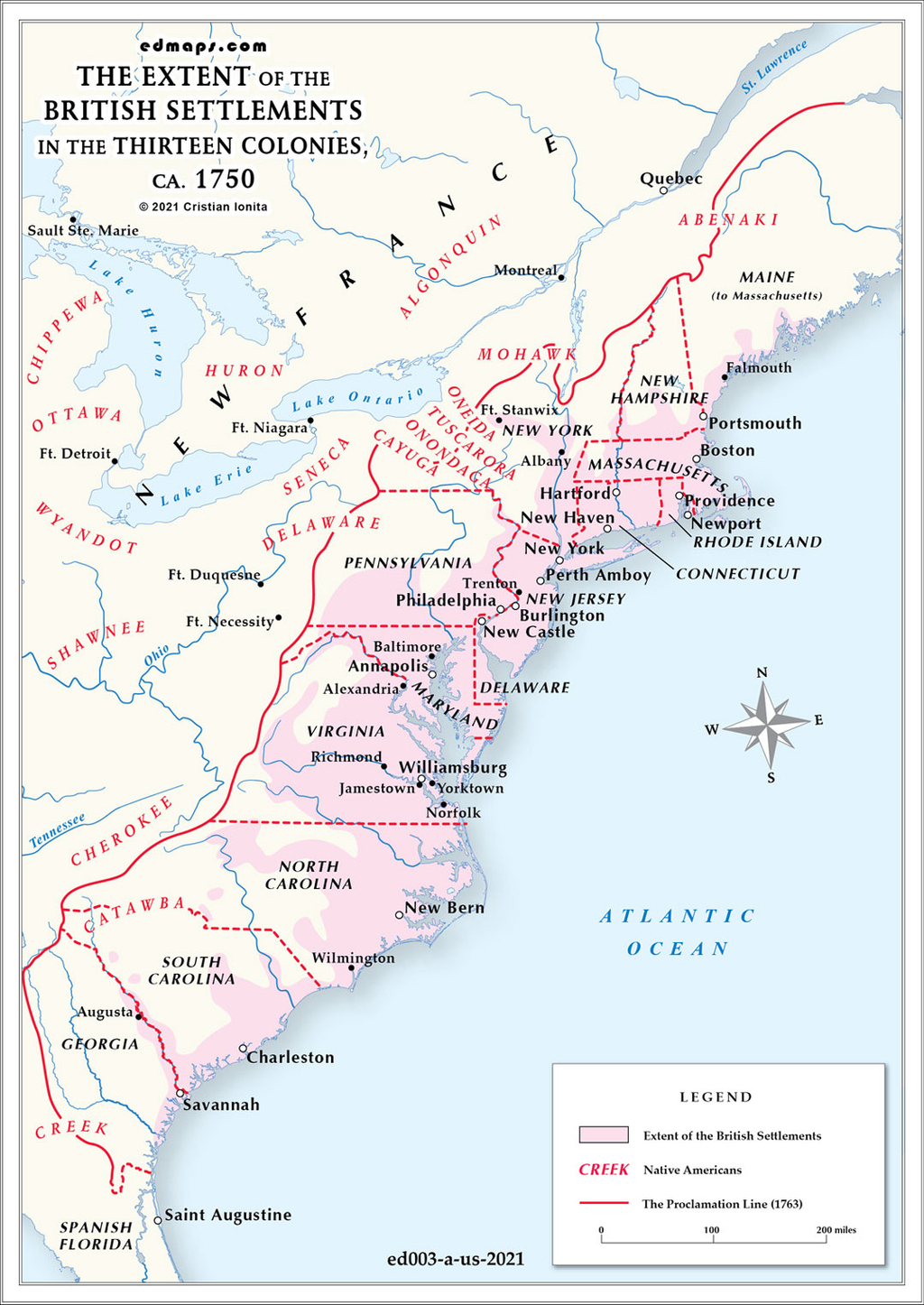

By 1750, British settlements in the thirteen American colonies had expanded significantly from their initial coastal footholds, though they remained largely confined east of the Appalachian Mountains.
The Atlantic coastline was thoroughly settled from Maine to Georgia, with established communities extending inland 50-100 miles in most regions. Tidewater areas of Virginia and Maryland featured dense plantation settlements along major rivers like the James, York, and Potomac. The Chesapeake Bay region supported extensive tobacco cultivation with scattered plantations and small towns.
Settlement patterns varied considerably by region. In New England, communities had pushed westward into the Connecticut River valley and central Massachusetts, establishing farming towns following the township system. The Connecticut River corridor supported thriving agricultural communities extending into present-day Vermont and New Hampshire.
Pennsylvania experienced the most dramatic interior expansion, with German and Scots-Irish immigrants settling the fertile southeastern counties and pushing westward toward the Susquehanna River. Lancaster County became a major agricultural center, while settlers were beginning to cross into the Cumberland Valley.
The Carolina Piedmont witnessed substantial settlement during the 1730s and 1740s as Scots-Irish and German immigrants moved south from Pennsylvania through the Great Wagon Road. These backcountry settlements extended from Virginia through the Carolinas, creating a distinct frontier culture different from coastal plantation society.
The Appalachian Mountains formed a natural barrier limiting westward expansion. Only scattered settlements existed beyond the mountain barrier, primarily in the Shenandoah Valley of Virginia and small communities in present-day Kentucky and Tennessee. Most colonial settlements remained within 150 miles of the Atlantic Ocean.
Population density was highest in southeastern Pennsylvania, the Connecticut River valley, and around major ports like Boston, New York, and Philadelphia. Rural areas maintained scattered farmsteads and small villages, while the frontier regions featured isolated homesteads and trading posts serving as advance settlements for future expansion.

Lorem ipsum dolor sit amet, consectetuer adipiscing elit. Aenean commodo ligula eget dolor. Lorem ipsum dolor sit amet.

Lorem ipsum dolor sit amet, consectetuer adipiscing elit. Aenean commodo ligula eget dolor. Lorem ipsum dolor sit amet.

Lorem ipsum dolor sit amet, consectetuer adipiscing elit. Aenean commodo ligula eget dolor. Lorem ipsum dolor sit amet.